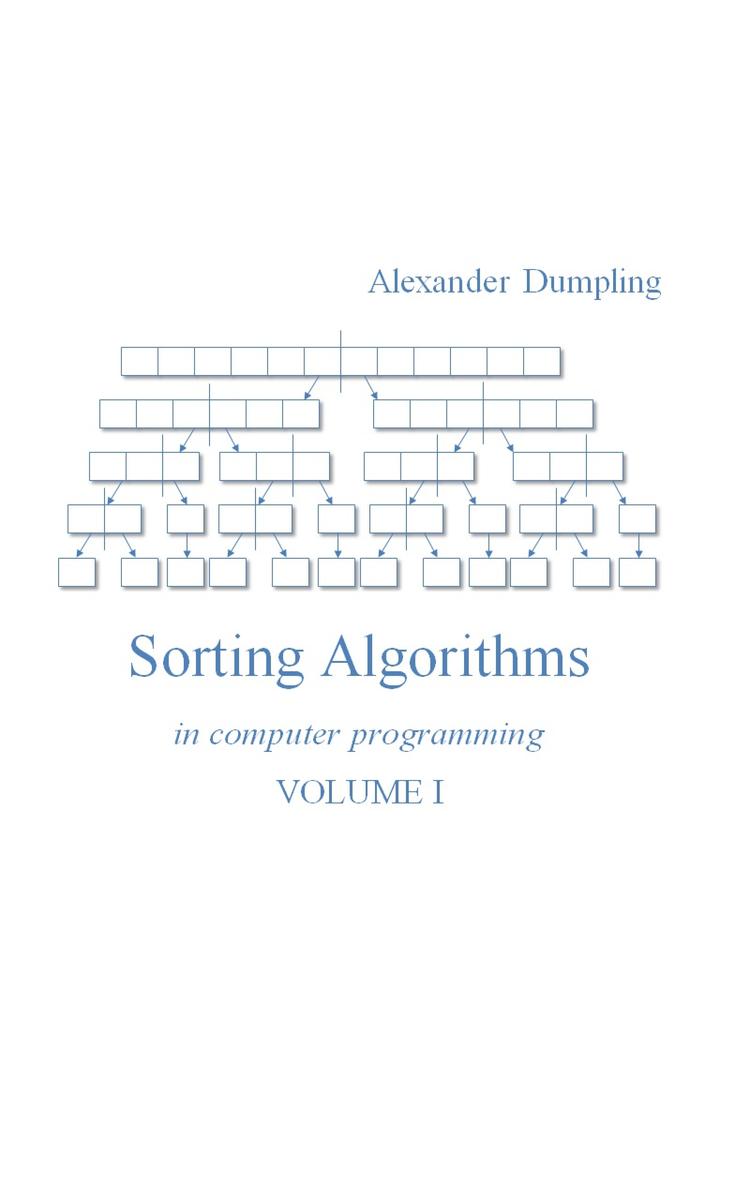
Sorting Algorithms In Computer Programming: Volume 1
¥163.50
Sorting Algorithms In Computer Programming: Volume 1
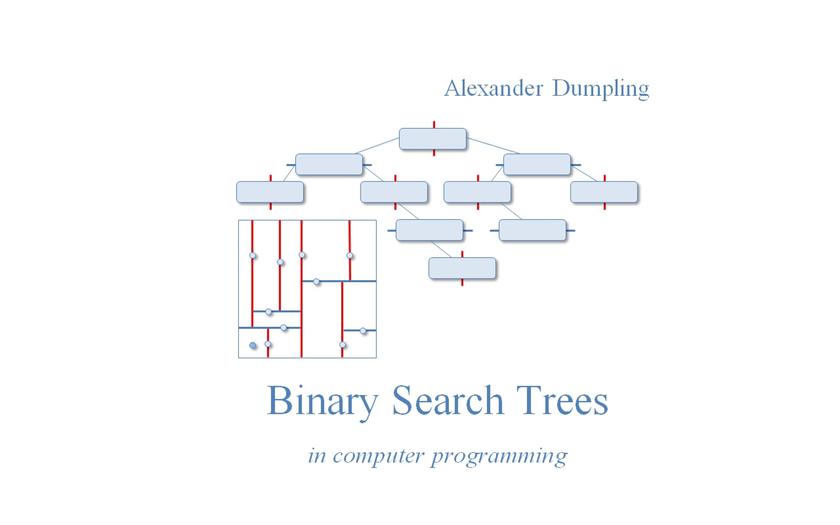
Binary Search Trees in Computer Programming
¥163.50
Binary Search Trees in Computer Programming
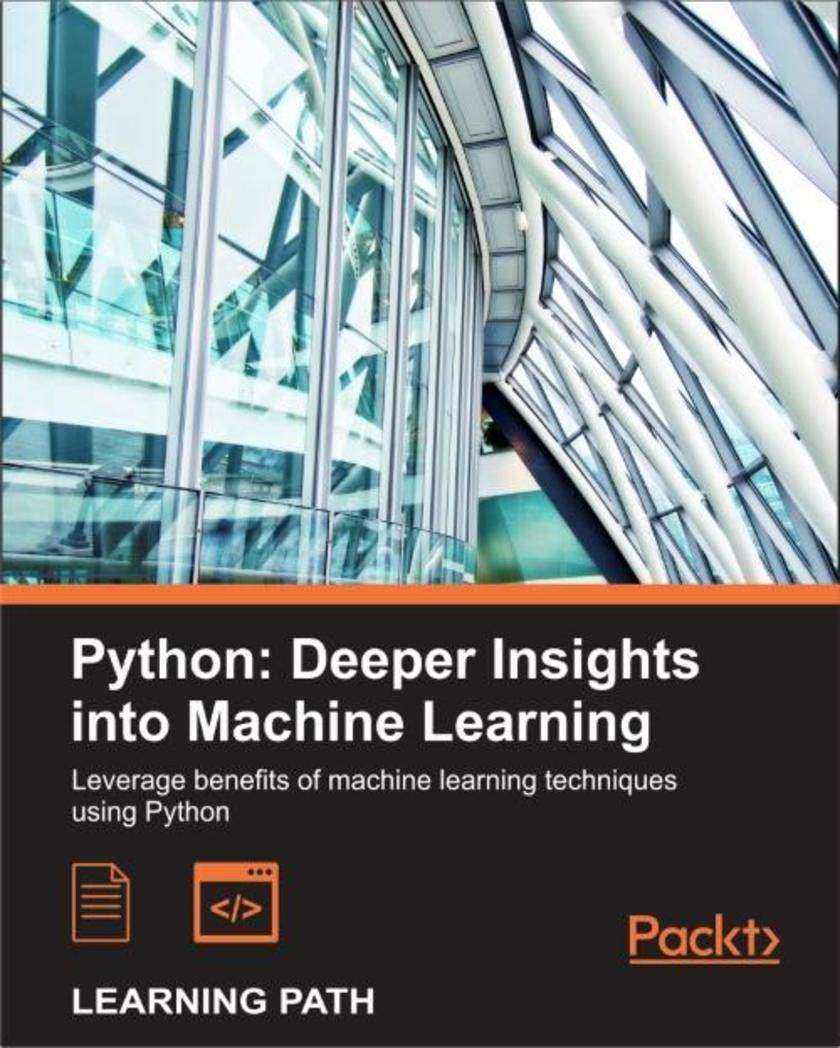
Python: Deeper Insights into Machine Learning
¥161.31
Leverage benefits of machine learning techniques using Python About This Book Improve and optimise machine learning systems using effective strategies. Develop a strategy to deal with a large amount of data. Use of Python code for implementing a range of machine learning algorithms and techniques. Who This Book Is For This title is for data scientist and researchers who are already into the field of data science and want to see machine learning in action and explore its real-world application. Prior knowledge of Python programming and mathematics is must with basic knowledge of machine learning concepts. What You Will Learn Learn to write clean and elegant Python code that will optimize the strength of your algorithms Uncover hidden patterns and structures in data with clustering Improve accuracy and consistency of results using powerful feature engineering techniques Gain practical and theoretical understanding of cutting-edge deep learning algorithms Solve unique tasks by building models Get grips on the machine learning design process In Detail Machine learning and predictive analytics are becoming one of the key strategies for unlocking growth in a challenging contemporary marketplace. It is one of the fastest growing trends in modern computing, and everyone wants to get into the field of machine learning. In order to obtain sufficient recognition in this field, one must be able to understand and design a machine learning system that serves the needs of a project. The idea is to prepare a learning path that will help you to tackle the real-world complexities of modern machine learning with innovative and cutting-edge techniques. Also, it will give you a solid foundation in the machine learning design process, and enable you to build customized machine learning models to solve unique problems. The course begins with getting your Python fundamentals nailed down. It focuses on answering the right questions that cove a wide range of powerful Python libraries, including scikit-learn Theano and Keras.After getting familiar with Python core concepts, it’s time to dive into the field of data science. You will further gain a solid foundation on the machine learning design and also learn to customize models for solving problems. At a later stage, you will get a grip on more advanced techniques and acquire a broad set of powerful skills in the area of feature selection and feature engineering. Style and approach This course includes all the resources that will help you jump into the data science field with Python. The aim is to walk through the elements of Python covering powerful machine learning libraries. This course will explain important machine learning models in a step-by-step manner. Each topic is well explained with real-world applications with detailed guidance.Through this comprehensive guide, you will be able to explore machine learning techniques.
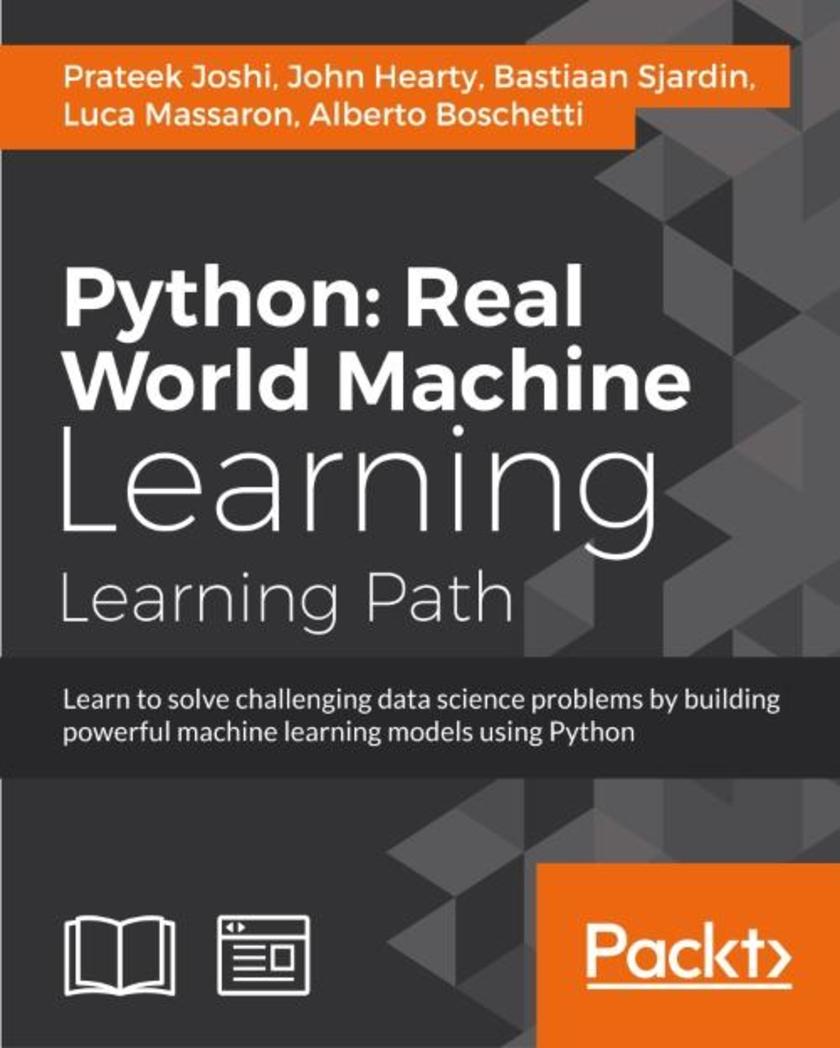
Python: Real World Machine Learning
¥161.31
Learn to solve challenging data science problems by building powerful machine learning models using Python About This Book Understand which algorithms to use in a given context with the help of this exciting recipe-based guide This practical tutorial tackles real-world computing problems through a rigorous and effective approach Build state-of-the-art models and develop personalized recommendations to perform machine learning at scale Who This Book Is For This Learning Path is for Python programmers who are looking to use machine learning algorithms to create real-world applications. It is ideal for Python professionals who want to work with large and complex datasets and Python developers and analysts or data scientists who are looking to add to their existing skills by accessing some of the most powerful recent trends in data science. Experience with Python, Jupyter Notebooks, and command-line execution together with a good level of mathematical knowledge to understand the concepts is expected. Machine learning basic knowledge is also expected. What You Will Learn Use predictive modeling and apply it to real-world problems Understand how to perform market segmentation using unsupervised learning Apply your new-found skills to solve real problems, through clearly-explained code for every technique and test Compete with top data scientists by gaining a practical and theoretical understanding of cutting-edge deep learning algorithms Increase predictive accuracy with deep learning and scalable data-handling techniques Work with modern state-of-the-art large-scale machine learning techniques Learn to use Python code to implement a range of machine learning algorithms and techniques In Detail Machine learning is increasingly spreading in the modern data-driven world. It is used extensively across many fields such as search engines, robotics, self-driving cars, and more. Machine learning is transforming the way we understand and interact with the world around us. In the first module, Python Machine Learning Cookbook, you will learn how to perform various machine learning tasks using a wide variety of machine learning algorithms to solve real-world problems and use Python to implement these algorithms. The second module, Advanced Machine Learning with Python, is designed to take you on a guided tour of the most relevant and powerful machine learning techniques and you’ll acquire a broad set of powerful skills in the area of feature selection and feature engineering. The third module in this learning path, Large Scale Machine Learning with Python, dives into scalable machine learning and the three forms of scalability. It covers the most effective machine learning techniques on a map reduce framework in Hadoop and Spark in Python. This Learning Path will teach you Python machine learning for the real world. The machine learning techniques covered in this Learning Path are at the forefront of commercial practice. This Learning Path combines some of the best that Packt has to offer in one complete, curated package. It includes content from the following Packt products: Python Machine Learning Cookbook by Prateek Joshi Advanced Machine Learning with Python by John Hearty Large Scale Machine Learning with Python by Bastiaan Sjardin, Alberto Boschetti, Luca Massaron Style and approach This course is a smooth learning path that will teach you how to get started with Python machine learning for the real world, and develop solutions to real-world problems. Through this comprehensive course, you’ll learn to create the most effective machine learning techniques from scratch and more!
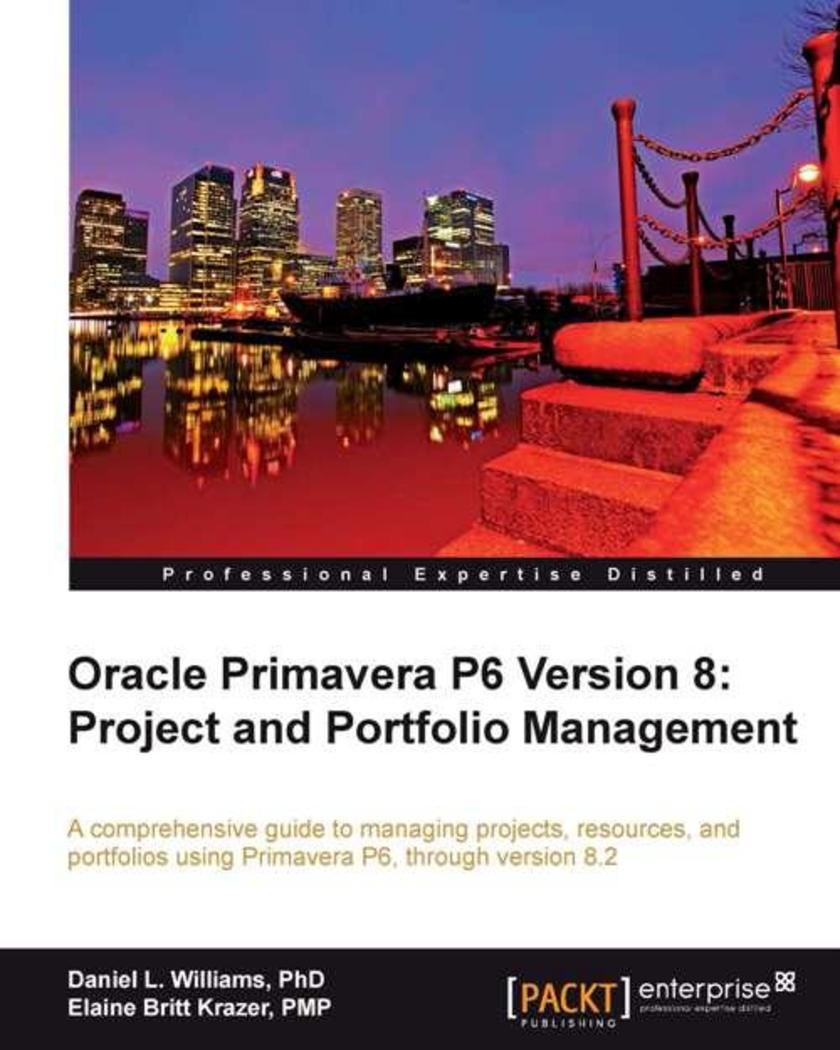
Oracle Primavera P6 Version 8: Project and Portfolio Management
¥161.31
This book is written in simple, easy to understand format with lots of screenshots and step-by-step explanations. If you are a Project manager or a consultant, who wants to master the core concepts of Primavera P6 and the new features associated with version 8, then this is the best guide for you. This book assumes that you have a fundamental knowledge of working in the Primavera P6 environment.
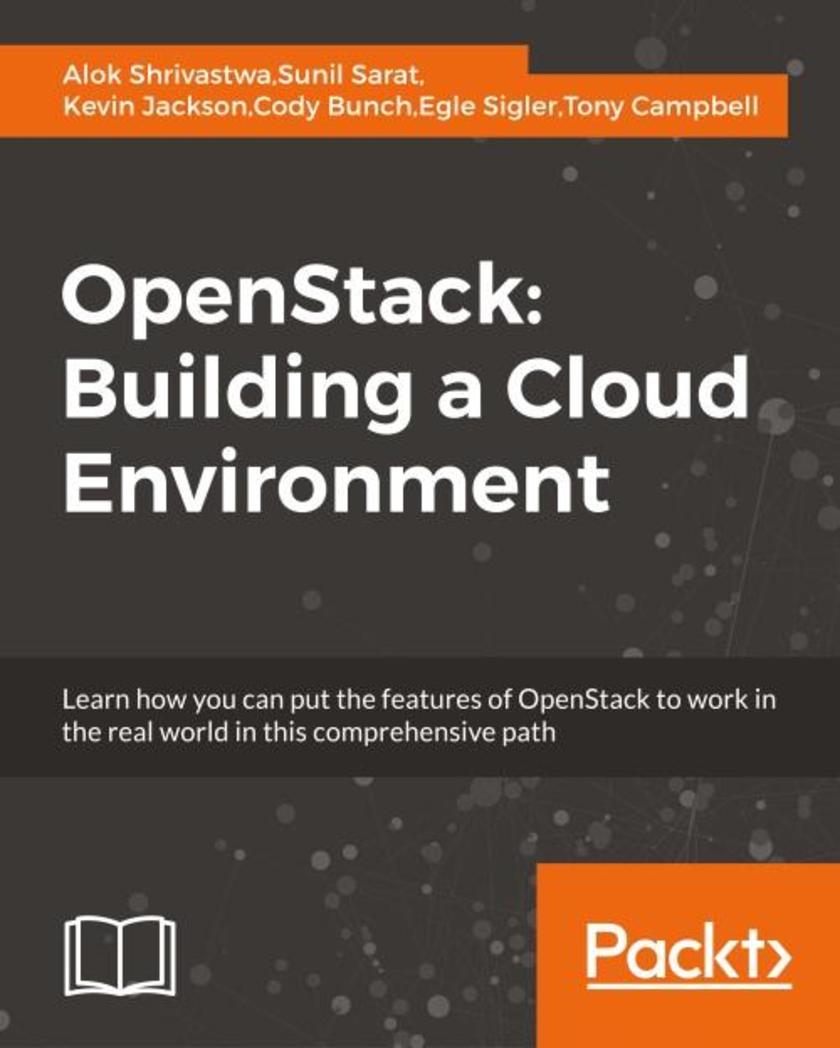
OpenStack: Building a Cloud Environment
¥161.31
Learn how you can put the features of OpenStack to work in the real world in this comprehensive path About This Book Harness the abilities of experienced OpenStack administrators and architects, and run your own private cloud successfully Learn how to install, configure, and manage all of the OpenStack core projects including topics on Object Storage, Block Storage, and Neutron Networking services such as LBaaS and FWaaS Get better equipped to troubleshoot and solve common problems in performance, availability, and automation that confront production-ready OpenStack environments Who This Book Is For This course is for those who are new to OpenStack who want to learn the cloud networking fundamentals and get started with OpenStack networking. Basic understanding of Linux Operating System, Virtualization, and Networking, and Storage principles will come in handy. What You Will Learn Get an introduction to OpenStack and its components Store and retrieve data and images using storage components, such as Cinder, Swift, and Glance Install and configure Swift, the OpenStack Object Storage service, including configuring Container Replication between datacenters Gain hands on experience and familiarity with Horizon, the OpenStack Dashboard user interface Learn how to automate OpenStack installations using Ansible and Foreman Follow practical advice and examples for running OpenStack in production Fix common issues with images served through Glance and master the art of troubleshooting Neutron networking In Detail OpenStack is a collection of software projects that work together to provide a cloud fabric. Learning OpenStack Cloud Computing course is an exquisite guide that you will need to build cloud environments proficiently. This course will help you gain a clearer understanding of OpenStack’s components and their interaction with each other to build a cloud environment. The first module, Learning OpenStack, starts with a brief look into the need for authentication and authorization, the different aspects of dashboards, cloud computing fabric controllers, along with 'Networking as a Service' and 'Software defined Networking'. Then, you will focus on installing, configuring, and troubleshooting different architectures such as Keystone, Horizon, Nova, Neutron, Cinder, Swift, and Glance. After getting familiar with the fundamentals and application of OpenStack, let's move deeper into the realm of OpenStack. In the second module, OpenStack Cloud Computing Cookbook, preview how to build and operate OpenStack cloud computing, storage, networking, and automation. Dive into Neutron, the OpenStack Networking service, and get your hands dirty with configuring ML2, networks, routers, and distributed virtual routers. Further, you'll learn practical examples of Block Storage, LBaaS, and FBaaS. The final module, Troubleshooting OpenStack, will help you quickly diagnose, troubleshoot, and correct problems in your OpenStack. We will diagnose and remediate issues in Keystone, Glance, Neutron networking, Nova, Cinder block storage, Swift object storage, and issues caused by Heat orchestration. This Learning Path combines some of the best that Packt has to offer in one complete, curated package. It includes content from the following Packt products: Learning OpenStack by Alok Shrivastwa, Sunil Sarat OpenStack Cloud Computing Cookbook - Third Edition by Kevin Jackson , Cody Bunch, Egle Sigler Troubleshooting OpenStack by Tony Campbell Style and approach This course aims to create a smooth learning path that will teach you how to get started with setting up private and public clouds using a free and open source cloud computing platform—OpenStack. Through this comprehensive course, you'll learn OpenStack Cloud computing from scratch to finish and more!"
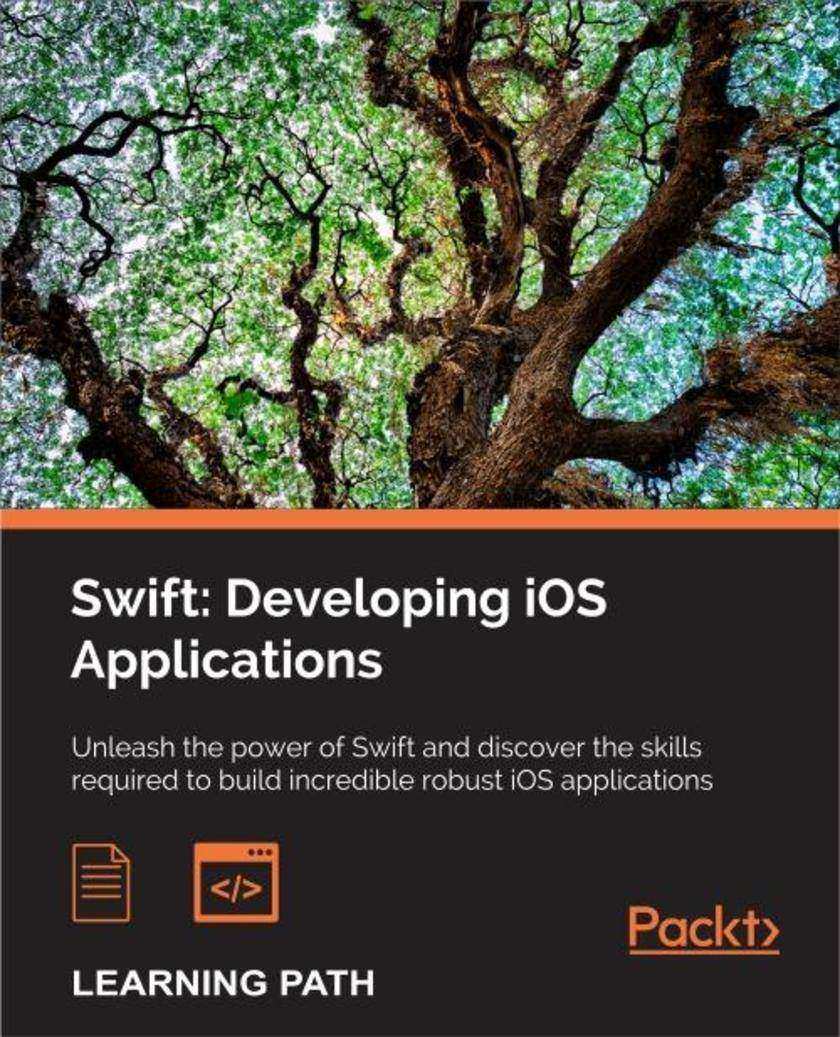
Swift: Developing iOS Applications
¥161.31
Unleash the power of Swift and discover the skills required to build incredible robust iOS applications About This Book Write expressive, understandable, and maintainable Swift 2 code with this hands-on course Unveil the complex underpinnings of Swift to turn your app ideas into reality Specialize in developing real iOS apps, and 2D and 3D video games using Swift and Cocoapods Dive deep into protocol extensions, learn new error handling model and use featured Swift design patterns to write more efficient code Who This Book Is For This course would be for app developers who are new to developing for iOS or OSX and are trying to get grips with Swift for the first time. What You Will Learn From a solid understanding of the Swift 2 language Get to know the practical aspects of how a computer program actually works Understand the paradigms used by Apple’s frameworks, so you are not intimidated by them Create a server in Swift to deliver JSON data to an iOS app Take advantage of Cocoapods to use third-party libraries Build games with SpriteKit and SceneKit Develop an app running on the cloud to act as an API server for your client’s apps Dive into the core components of Swift 2 including operators, collections, control flow, and functions Create and use classes, structures, and enums including object-oriented topics such as inheritance, protocols, and extensions Develop a practical understanding of sub*s, optionals, and closures Master Objective-C interoperability with mix and match Access network resources using Swift Implement various standard design patterns in the Swift language In Detail The Swift––Developing iOS Applications course will take you on a journey to become an efficient iOS and OS X developer, with the latest trending topic in town. Right from the basics to the advanced level topics, this course would cover everything in detail. We’ll embark our journey by dividing the learning path into four modules. Each of these modules are a mini course in their own right; and as you complete each one, you’ll gain key skills and be ready for the material in the next module. The first module is like a step-by-step guide to programming in Swift 2. Each topic is separated into compressible sections that are full of practical examples and easy-to-understand explanations. Each section builds on the previous topics, so you can develop a proficient and comprehensive understanding of app development in Swift 2. By the end of this module, you’ll have a basic understanding of Swift 2 and its functionalities. The second module will be the an easy-to-follow guide filled with tutorials to show you how to build real-world apps. The difficulty and complexity level increases chapter by chapter. Each chapter is dedicated to build a new app, beginning from a basic and unstyled app through to a full 3D game. The last two chapters show you how to build a complete client-server e-commerce app right from scratch. You’ll be able to build well-designed apps, effectively use AutoLayout, develop videogames, and build server apps. The third and the last module of our course will take an example-based approach where each concept covered is supported by example code to not only give you a good understanding of the concept, but also to demonstrate how to properly implement it. Style and approach This course includes all the resources that will help you jump into the app development .This course covers all the important aspects Swift application development and is divided into individual modules so that you develop your skill after the completion of a module and get ready for the next. Through this comprehensive course, you'll learn how to use Swift programming with hands-on examples from scratch to finish!
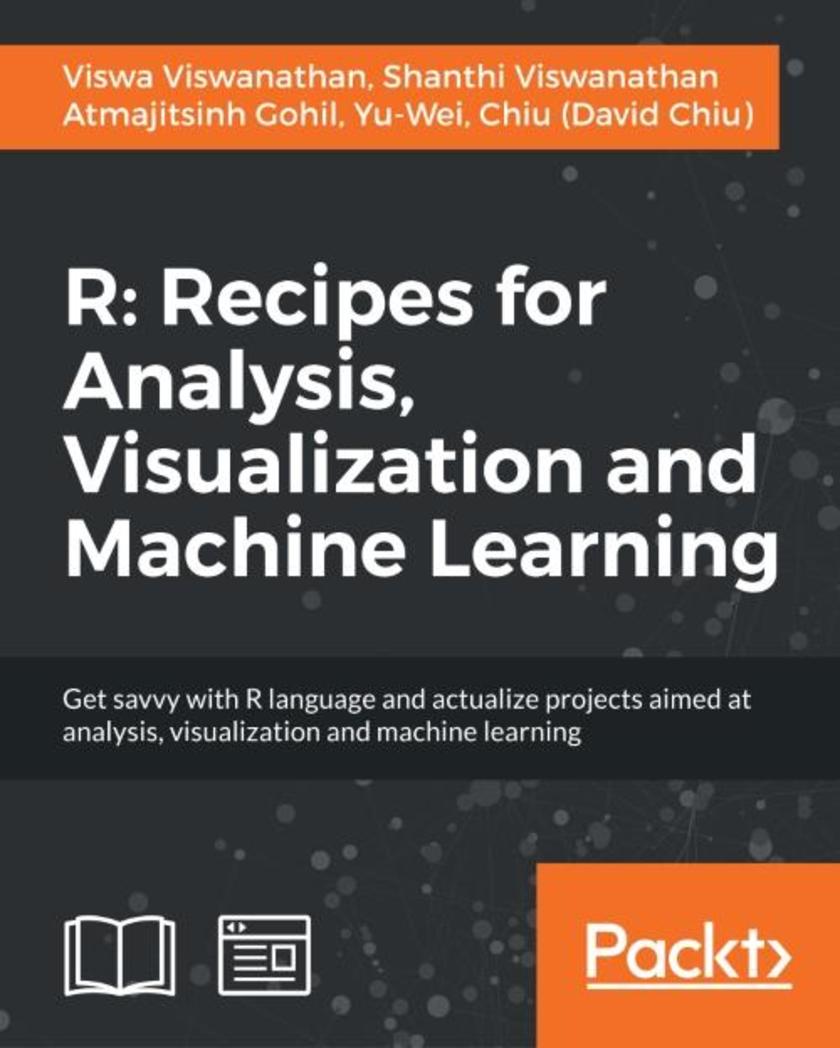
R: Recipes for Analysis, Visualization and Machine Learning
¥161.31
Get savvy with R language and actualize projects aimed at analysis, visualization and machine learning About This Book Proficiently analyze data and apply machine learning techniques Generate visualizations, develop interactive visualizations and applications to understand various data exploratory functions in R Construct a predictive model by using a variety of machine learning packages Who This Book Is For This Learning Path is ideal for those who have been exposed to R, but have not used it extensively yet. It covers the basics of using R and is written for new and intermediate R users interested in learning. This Learning Path also provides in-depth insights into professional techniques for analysis, visualization, and machine learning with R – it will help you increase your R expertise, regardless of your level of experience. What You Will Learn Get data into your R environment and prepare it for analysis Perform exploratory data analyses and generate meaningful visualizations of the data Generate various plots in R using the basic R plotting techniques Create presentations and learn the basics of creating apps in R for your audience Create and inspect the transaction dataset, performing association analysis with the Apriori algorithm Visualize associations in various graph formats and find frequent itemset using the ECLAT algorithm Build, tune, and evaluate predictive models with different machine learning packages Incorporate R and Hadoop to solve machine learning problems on big data In Detail The R language is a powerful, open source, functional programming language. At its core, R is a statistical programming language that provides impressive tools to analyze data and create high-level graphics. This Learning Path is chock-full of recipes. Literally! It aims to excite you with awesome projects focused on analysis, visualization, and machine learning. We’ll start off with data analysis – this will show you ways to use R to generate professional analysis reports. We’ll then move on to visualizing our data – this provides you with all the guidance needed to get comfortable with data visualization with R. Finally, we’ll move into the world of machine learning – this introduces you to data classification, regression, clustering, association rule mining, and dimension reduction. This Learning Path combines some of the best that Packt has to offer in one complete, curated package. It includes content from the following Packt products: R Data Analysis Cookbook by Viswa Viswanathan and Shanthi Viswanathan R Data Visualization Cookbook by Atmajitsinh Gohil Machine Learning with R Cookbook by Yu-Wei, Chiu (David Chiu) Style and approach This course creates a smooth learning path that will teach you how to analyze data and create stunning visualizations. The step-by-step instructions provided for each recipe in this comprehensive Learning Path will show you how to create machine learning projects with R.
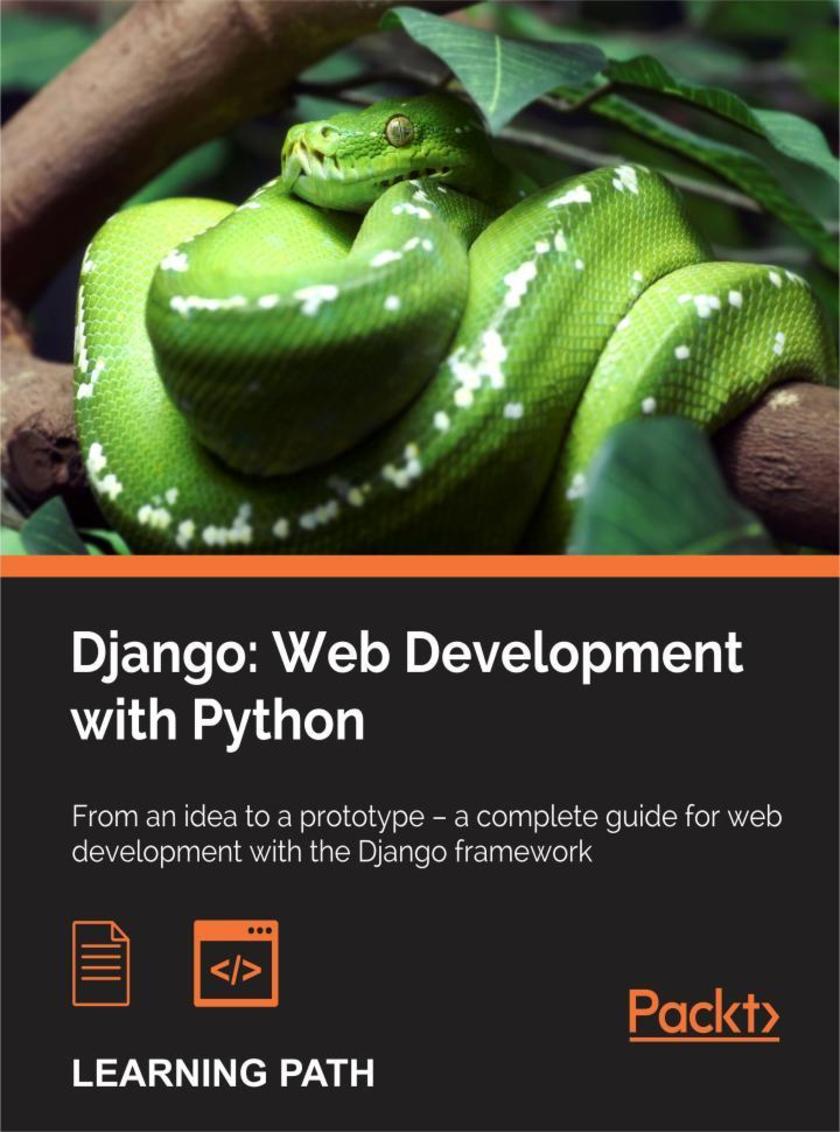
Django: Web Development with Python
¥152.59
From an idea to a prototype – a complete guide for web development with the Django framework About This Book Explore the best practices to develop applications of a superior quality with Django framework Unravel the common problems of web development in Django This course teaches you major Django functions and will help you improve your skills by developing models, forms, views, and templates Experience the challenges of working on an end-to-end social network project Who This Book Is For Web developers who want to use modern Python-based web frameworks like Django to build powerful web applications. The course is mostly self-contained and introduces web development with Python to a reader who is familiar with web development concepts and can help him become an expert in this trade. It’s intended for all levels of web developers, both students and practitioners from novice to experts. What You Will Learn Use Django models to store information in the database and generate queries to access a database across models Quickly develop web pages to create, read, update, and delete data from the model using class-based views Generate very maintainable forms with Django Import data from local sources and external web services as well as exporting your data to third parties Deep dive into various aspects of Django from models and views to testing and deployment Familiarize yourself with the various nuances of web development such as browser attacks and databases In Detail Data science is hot right now, and the need for multitalented developers is greater than ever before. A basic grounding in building apps with a framework as minimalistic, powerful, and easy-to-learn as Django will be a useful skill to launch your career as an entrepreneur or web developer. Django is a web framework that was designed to strike a balance between rapid web development and high performance. This course will take you on a journey to become an efficient web developer thoroughly understanding the key concepts of Django framework. This learning path is divided into three modules. The course begins with basic concepts of the Django framework. The first module, Django Essentials, is like a practical guide, filled with many real-world examples to build highly effective Django web application. After getting familiar with core concepts of Django, it's time to practice your learning from the first module with the help of over 90 recipes available in this module. In the second module, Web Development with Django Cookbook, you'll learn varying complexities to help you create multilingual, responsive, and scalable websites with Django. By the end of this module, you will have a good understanding of the new features added to Django 1.8 and be an expert at web development processes.The next step is to discover the latest best practices and idioms in this rapidly evolving Django framework. This is what you'll be learning in our third module, Django Design Patterns and Best Practices. This module will teach you common design patterns to develop better Django code. By the end of the module, you will be able to leverage the Django framework to develop a fully functional web application with minimal effort. Style and approach This course includes all the resources that will help you jump into the web development field with Django and learn how to make scalable and robust web applications. The aim is to create a smooth learning path that will teach you how to get started with the powerful Django framework and perform various web development techniques in depth. Through this comprehensive course, you'll learn web development with Django from scratch to finish!

Python: Master the Art of Design Patterns
¥152.59
Ensure your code is sleek, efficient and elegant by mastering powerful Python design patterns About This Book Learn all about abstract design patterns and how to implement them in Python 3 Understand the structural, creational, and behavioral Python design patterns Get to know the context and application of design patterns to solve real-world problems in software architecture, design, and application development Discover how to simplify Design Pattern implementation using the power of Python 3 Who This Book Is For If you have basic Python skills and wish to learn in depth how to correctly apply appropriate design patterns, this course is tailor made for you. What You Will Learn Discover what design patterns are and how to apply them to writing Python Implement objects in Python by creating classes and defining methods Separate related objects into a taxonomy of classes and describe the properties and behaviors of those objects via the class interface Understand when to use object-oriented features, and more importantly when not to use them Get to know proven solutions to common design issues Explore the design principles that form the basis of software design, such as loose coupling, the Hollywood principle, and the Open Close principle, among others Use Structural Design Patterns and find out how objects and classes interact to build larger applications Improve the productivity and code base of your application using Python design patterns Secure an interface using the Proxy pattern In Detail Python is an object-oriented *ing language that is used in everything from data science to web development. Known for its simplicity, Python increases productivity and minimizes development time. Through applying essential software engineering design patterns to Python, Python code becomes even more efficient and reusable from project to project. This learning path takes you through every traditional and advanced design pattern best applied to Python code, building your skills in writing exceptional Python. Divided into three distinct modules, you’ll go from foundational to advanced concepts by following a series of practical tutorials. Start with the bedrock of Python programming – the object-oriented paradigm. Rethink the way you work with Python as you work through the Python data structures and object-oriented techniques essential to modern Python programming. Build your confidence as you learn Python syntax, and how to use OOP principles with Python tools such as Django and Kivy. In the second module, run through the most common and most useful design patterns from a Python perspective. Progress through Singleton patterns, Factory patterns, Fa?ade patterns and more all with detailed hands-on guidance. Enhance your professional abilities in in software architecture, design, and development. In the final module, run through the more complex and less common design patterns, discovering how to apply them to Python coding with the help of real-world examples. Get to grips with the best practices of writing Python, as well as creating systems architecture and troubleshooting issues. This Learning Path combines some of the best that Packt has to offer in one complete, curated package. It includes content from the following Packt products: Python 3 Object-Oriented Programming - Second Edition by Dusty Phillips Learning Python Design Patterns - Second Edition by Chetan Giridhar Mastering Python Design Patterns by Sakis Kasampalis Style and approach Advance your Python code through three distinct modules that each build on preceding content. Get the complete coverage of Python design patterns you need to write elegant and efficient code that’s reusable and powerful.
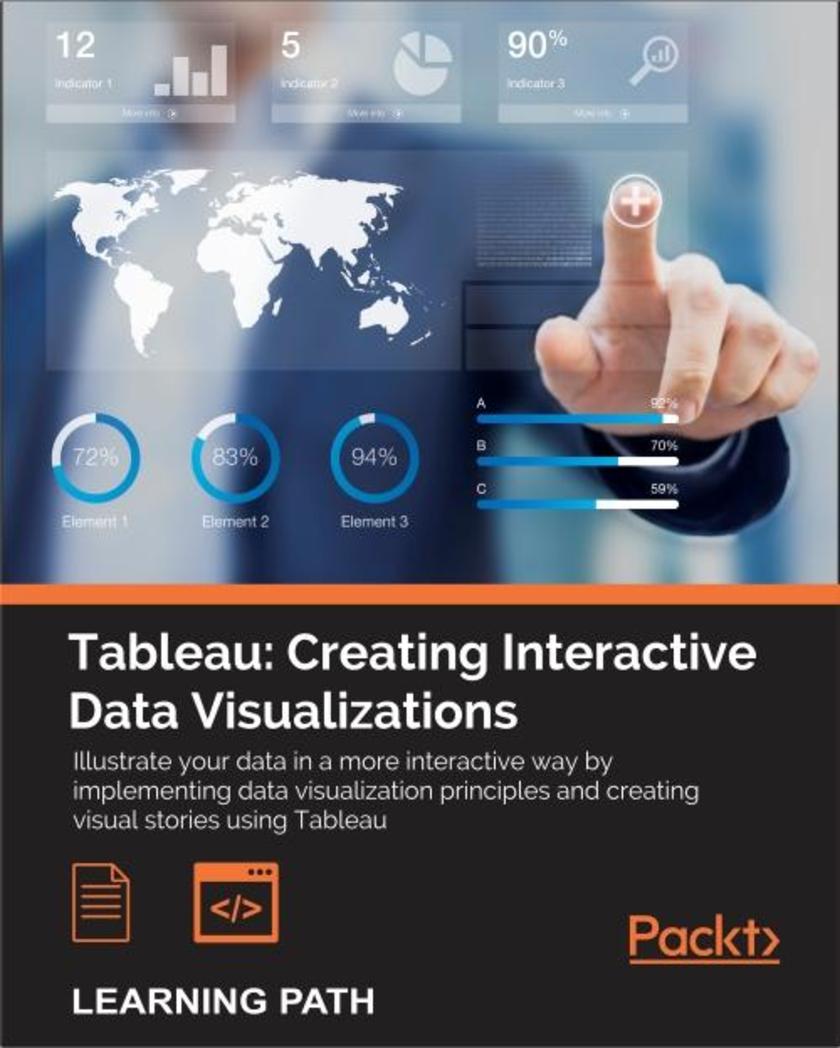
Tableau: Creating Interactive Data Visualizations
¥152.59
Illustrate your data in a more interactive way by implementing data visualization principles and creating visual stories using Tableau About This Book Use data visualization principles to help you to design dashboards that enlighten and support business decisions Integrate your data to provide mashed-up dashboards Connect to various data sources and understand what data is appropriate for Tableau Public Understand chart types and when to use specific chart types with different types of data Who This Book Is For Data scientists who have just started using Tableau and want to build on the skills using practical examples. Familiarity with previous versions of Tableau will be helpful, but not necessary. What You Will Learn Customize your designs to meet the needs of your business using Tableau Use Tableau to prototype, develop, and deploy the final dashboard Create filled maps and use any shape file Discover features of Tableau Public, from basic to advanced Build geographic maps to bring context to data Create filters and actions to allow greater interactivity to Tableau Public visualizations and dashboards Publish and embed Tableau visualizations and dashboards in articles In Detail With increasing interest for data visualization in the media, businesses are looking to create effective dashboards that engage as well as communicate the truth of data. Tableau makes data accessible to everyone, and is a great way of sharing enterprise dashboards across the business. Tableau is a revolutionary toolkit that lets you simply and effectively create high-quality data visualizations. This course starts with making you familiar with its features and enable you to develop and enhance your dashboard skills, starting with an overview of what dashboard is, followed by how you can collect data using various mathematical formulas. Next, you'll learn to filter and group data, as well as how to use various functions to present the data in an appealing and accurate way. In the first module, you will learn how to use the key advanced string functions to play with data and images. You will be walked through the various features of Tableau including dual axes, scatterplot matrices, heat maps, and sizing.In the second module, you’ll start with getting your data into Tableau, move onto generating progressively complex graphics, and end with the finishing touches and packaging your work for distribution. This module is filled with practical examples to help you create filled maps, use custom markers, add slider selectors, and create dashboards. You will learn how to manipulate data in various ways by applying various filters, logic, and calculating various aggregate measures. Finally, in the third module, you learn about Tableau Public using which allows readers to explore data associations in multiple-sourced public data, and uses state-of-the-art dashboard and chart graphics to immerse the users in an interactive experience. In this module, the readers can quickly gain confidence in understanding and expanding their visualization, creation knowledge, and quickly create interesting, interactive data visualizations to bring a richness and vibrancy to complex articles. The course provides a great overview for beginner to intermediate Tableau users, and covers the creation of data visualizations of varying complexities. Style and approach The approach will be a combined perspective, wherein we start by performing some basic recipes and move on to some advanced ones. Finally, we perform some advanced analytics and create appealing and insightful data stories using Tableau Public in a step-by-step manner.
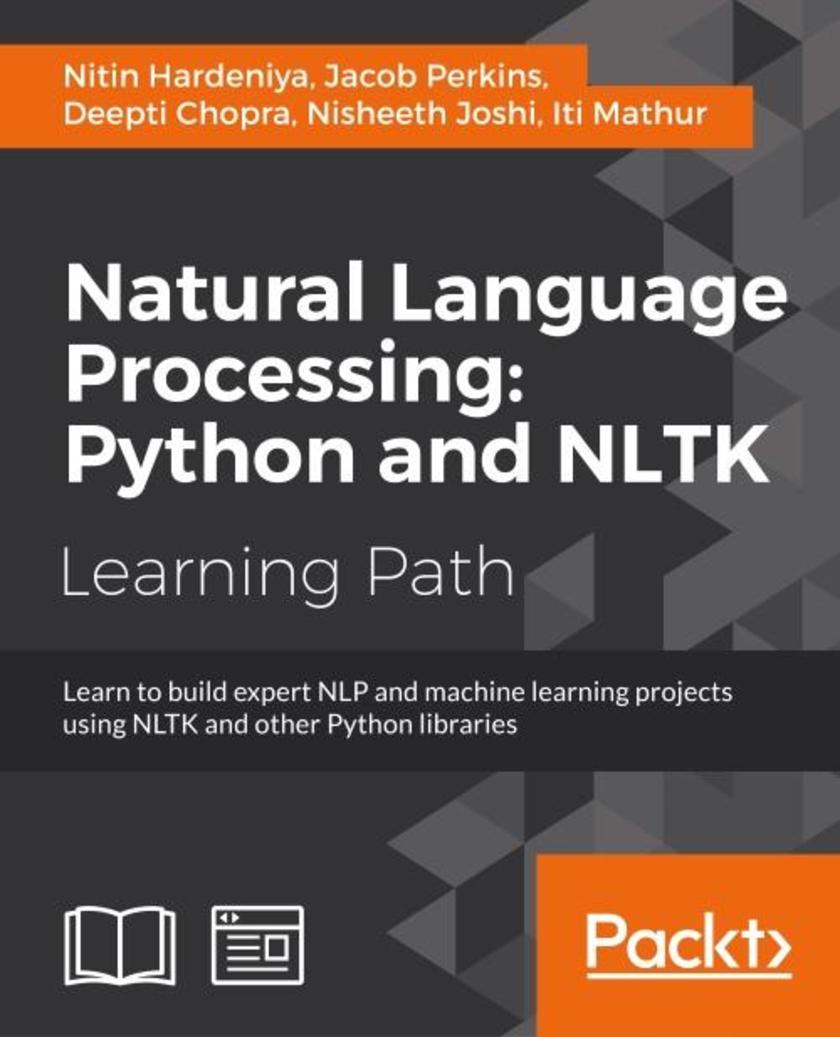
Natural Language Processing: Python and NLTK
¥152.59
Learn to build expert NLP and machine learning projects using NLTK and other Python libraries About This Book Break text down into its component parts for spelling correction, feature extraction, and phrase transformation Work through NLP concepts with simple and easy-to-follow programming recipes Gain insights into the current and budding research topics of NLP Who This Book Is For If you are an NLP or machine learning enthusiast and an intermediate Python programmer who wants to quickly master NLTK for natural language processing, then this Learning Path will do you a lot of good. Students of linguistics and semantic/sentiment analysis professionals will find it invaluable. What You Will Learn The scope of natural language complexity and how they are processed by machines Clean and wrangle text using tokenization and chunking to help you process data better Tokenize text into sentences and sentences into words Classify text and perform sentiment analysis Implement string matching algorithms and normalization techniques Understand and implement the concepts of information retrieval and text summarization Find out how to implement various NLP tasks in Python In Detail Natural Language Processing is a field of computational linguistics and artificial intelligence that deals with human-computer interaction. It provides a seamless interaction between computers and human beings and gives computers the ability to understand human speech with the help of machine learning. The number of human-computer interaction instances are increasing so it’s becoming imperative that computers comprehend all major natural languages. The first NLTK Essentials module is an introduction on how to build systems around NLP, with a focus on how to create a customized tokenizer and parser from scratch. You will learn essential concepts of NLP, be given practical insight into open source tool and libraries available in Python, shown how to analyze social media sites, and be given tools to deal with large scale text. This module also provides a workaround using some of the amazing capabilities of Python libraries such as NLTK, scikit-learn, pandas, and NumPy. The second Python 3 Text Processing with NLTK 3 Cookbook module teaches you the essential techniques of text and language processing with simple, straightforward examples. This includes organizing text corpora, creating your own custom corpus, text classification with a focus on sentiment analysis, and distributed text processing methods. The third Mastering Natural Language Processing with Python module will help you become an expert and assist you in creating your own NLP projects using NLTK. You will be guided through model development with machine learning tools, shown how to create training data, and given insight into the best practices for designing and building NLP-based applications using Python. This Learning Path combines some of the best that Packt has to offer in one complete, curated package and is designed to help you quickly learn text processing with Python and NLTK. It includes content from the following Packt products: NTLK essentials by Nitin Hardeniya Python 3 Text Processing with NLTK 3 Cookbook by Jacob Perkins Mastering Natural Language Processing with Python by Deepti Chopra, Nisheeth Joshi, and Iti Mathur Style and approach This comprehensive course creates a smooth learning path that teaches you how to get started with Natural Language Processing using Python and NLTK. You’ll learn to create effective NLP and machine learning projects using Python and NLTK.
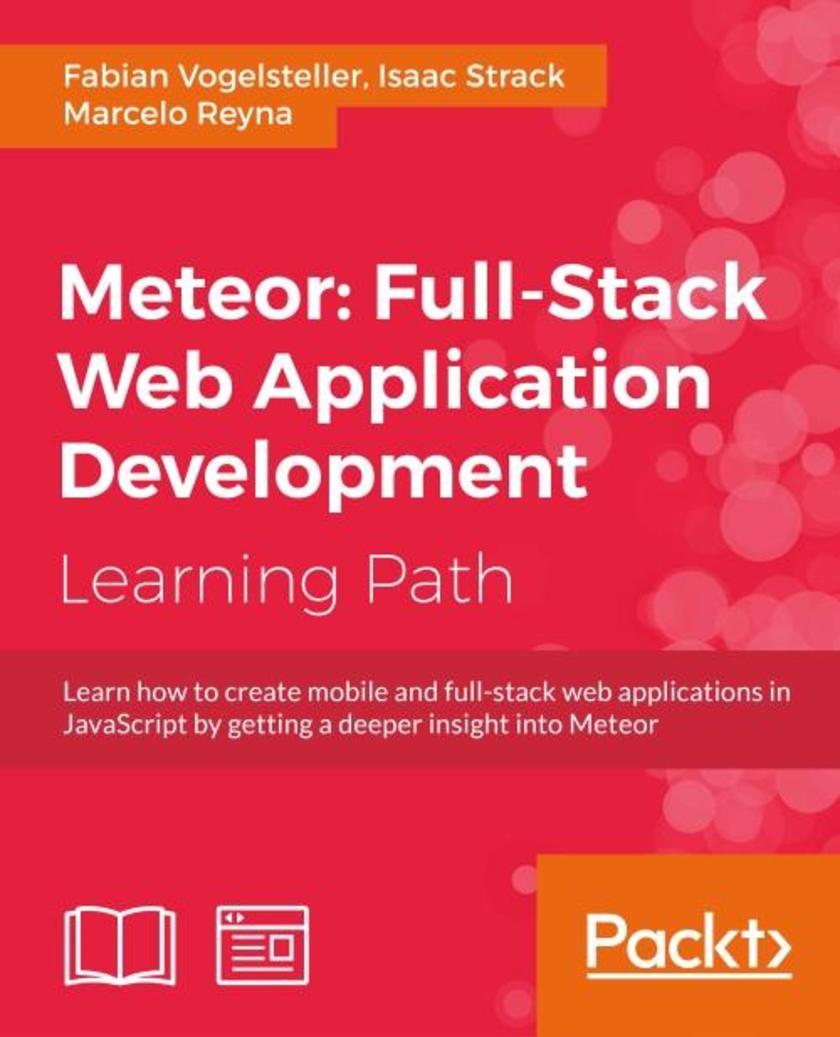
Meteor: Full-Stack Web Application Development
¥152.59
Learn how to create mobile and full-stack web applications in JavaScript by getting a deeper insight into Meteor About This Book This step-by-step tutorial will show you how to build fast, complex web applications Over 65 hands-on recipes help you build and deploy elegant web applications Optimize your web application for production use Who This Book Is For If you are a web developer who is familiar with Meteor and has basic knowledge of web development, and you now want to explore new paradigms of single-page, real-time applications, this course is perfectly suited for you. What You Will Learn Secure your site with Meteor best practices Create reactive templates that update themselves when data changes Add routing to a single-page application and make it appear like a real website Make your own Meteor packages and see how to make them public Rapidly build robust, responsive user interfaces Publish your own reusable custom packages Optimize your site for load speed with advanced publishers and subscribers Master the intricacies of front-end development using Jeet, Bootstrap, CSS animations, and more Leverage the aggregation framework to produce results with big data Optimize your site for search engine visibility In Detail Meteor is best JavaScript development platform and is packed with collections of libraries and packages bound together in a tidy way to take care of everything from development to production, making your web development easier. This course follows a learning path divided into three modules. Each module is a mini course in its own right, taking your knowledge to a new level as you progress. The first module takes you from the installation of Meteor to building a fully working web blog (including back end) to create and edit posts. Your path will begin with the basic concepts and folder structure of a Meteor project, learning how Meteor templates work to test packages, and seeing the application itself. The second module is a cookbook that starts with simple recipes designed for quick reference, and culminating advanced recipes that walk you through building and deploying a complete application. The cookbook covers all the major areas of Meteor development, including lesser-known and undocumented features too. With all the important concepts covered in the previous modules, the third module will get you equipped with simple solutions to boost your development skills. You’ll learn about mapping of real-world data and optimizing it, how to optimize and secure web applications and how to deploy and maintain it without breaking its features. Throughout the module, you will put your skills into practice and build an online shop from scratch. This Learning Path combines some of the best that Packt has to offer in one complete, curated package. It includes content from the following Packt products: Building Single-page Web Apps with Meteor, Fabian Vogelsteller Meteor Cookbook, Isaac Strack Meteor Design Patterns, Marcelo Reyna Style and approach This practical handbook has a step-by-step approach to help you improve your developer skills and efficiently built web applications using Meteor.
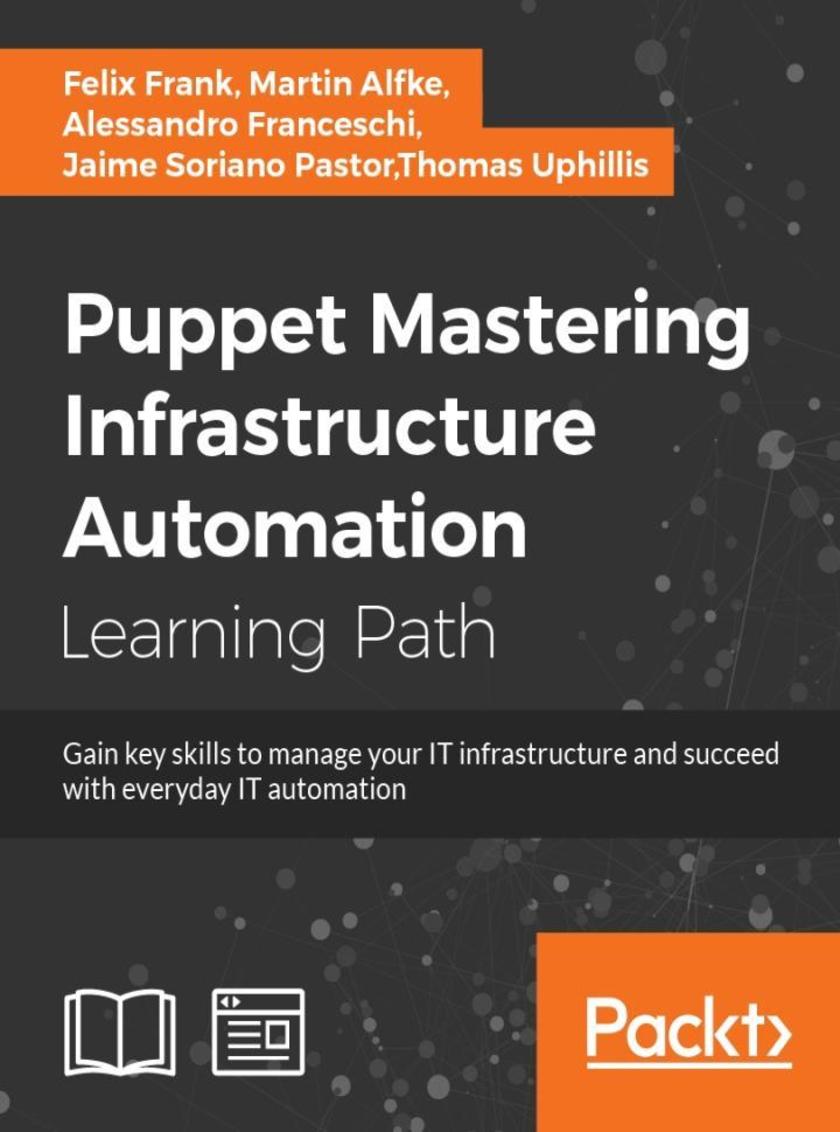
Puppet: Mastering Infrastructure Automation
¥152.59
Start pulling the strings of your IT infrastructure effectively with Puppet – learn how to configure, customize and manage your systems more intelligently in an enterprise deployment. About This Book ? Step-by-step instructions to jump start your Puppet deployment and automate your IT configurations ? Design, implement, and deploy Puppet in your infrastructure and tackle everyday IT infrastructure challenges ? Gain expert understanding of Puppet's latest and most advanced features Who This Book Is For If you're an experienced IT professional and a new Puppet user, this course will provide you with all you need to know to go from installation to advanced automation. What You Will Learn ? Write and employ individual Puppet manifests ? Understand how Puppet implements system abstraction ? Use Puppet to manage network, cloud, and virtualization devices ? Manage and test the Puppet code workflow ? Tweak, hack, and adapt the Puppet extension points ? Use exported resources to orchestrate change between machines ? Debug a puppetserver using Java techniques In Detail Puppet is a configuration management tool that allows you to automate all your IT configurations, giving you control. It was written for and by system administrators to manage large numbers of systems efficiently and prevent configuration drifts. Puppet gives you control of what you do to each node, when you do it, and how you do it.This Learning Path will take you from the basics of Puppet to extending it and then mastering it. We will start off with a primer on Puppet, its installation and get a sneak peek under its hood. We will then move on to designing and deploying your Puppet architecture, learning best practices for writing reusable and maintainable code, and executing, testing, and deploying Puppet across your systems. Finally, we will deal with problems of scale and exceptions in your code, automate workflows, and support multiple developers working simultaneously.This course is based on the following books: 1. Puppet 4 Essentials - Second Edition 2. Extending Puppet - Second Edition 3. Mastering Puppet - Second Edition Style and approach This learning path follows a practical approach, starting from the basic commands to advanced aspects. Through a series of examples you will learn the most important skills essential to manage your IT infrastructure effectively.
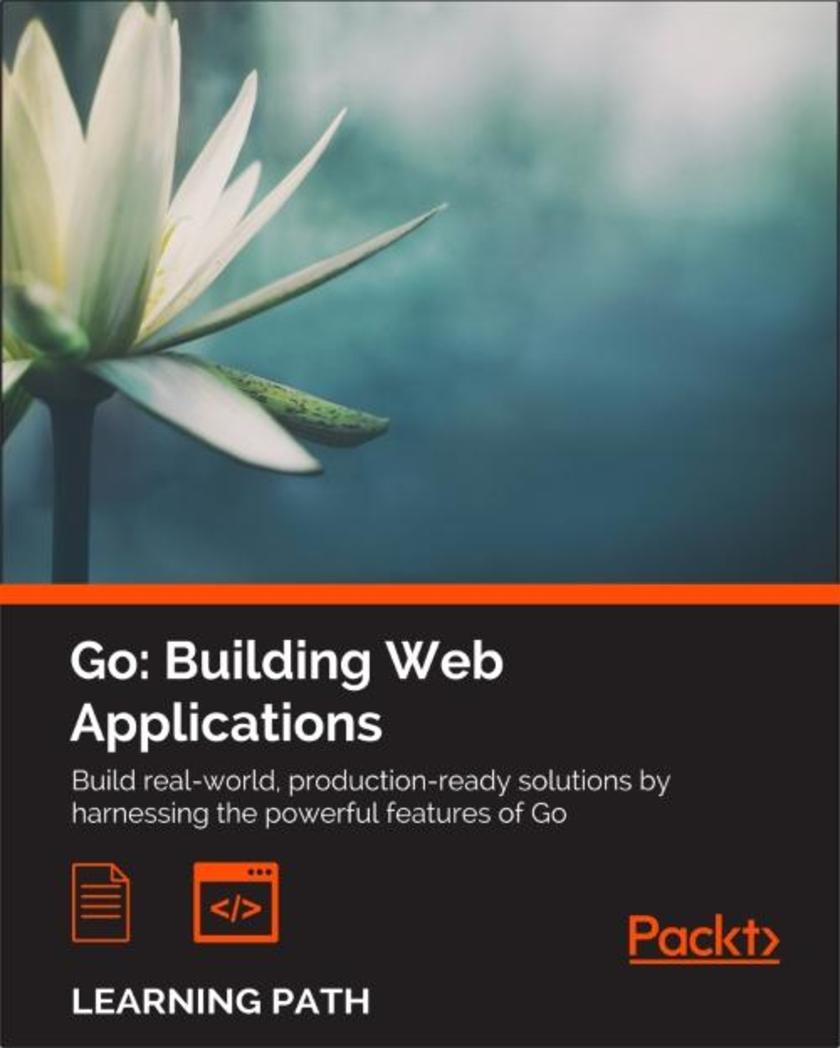
Go: Building Web Applications
¥152.59
Build real-world, production-ready solutions by harnessing the powerful features of Go About This Book An easy-to-follow guide that provides everything a developer needs to know to build end-to-end web applications in Go Write interesting and clever, but simple code, and learn skills and techniques that are directly transferable to your own projects A practical approach to utilize application scaffolding to design highly scalable programs that are deeply rooted in go routines and channels Who This Book Is For This book is intended for developers who are new to Go, but have previous experience of building web applications and APIs. What You Will Learn Build a fully featured REST API to enable client-side single page apps Utilize TLS to build reliable and secure sites Learn to apply the nuances of the Go language to implement a wide range of start-up quality projects Create websites and data services capable of massive scale using Go's net/http package, exploring RESTful patterns as well as low-latency WebSocket APIs Interact with a variety of remote web services to consume capabilities ranging from authentication and authorization to a fully functioning thesaurus Explore the core syntaxes and language features that enable concurrency in Go Understand when and where to use concurrency to keep data consistent and applications non-blocking, responsive, and reliable Utilize advanced concurrency patterns and best practices to stay low-level without compromising the simplicity of Go itself In Detail Go is an open source programming language that makes it easy to build simple, reliable, and efficient software. It is a statically typed language with syntax loosely derived from that of C, adding garbage collection, type safety, some dynamic-typing capabilities, additional built-in types such as variable-length arrays and key-value maps, and a large standard library. This course starts with a walkthrough of the topics most critical to anyone building a new web application. Whether it’s keeping your application secure, connecting to your database, enabling token-based authentication, or utilizing logic-less templates, this course has you covered. Scale, performance, and high availability lie at the heart of the projects, and the lessons learned throughout this course will arm you with everything you need to build world-class solutions. It will also take you through the history of concurrency, how Go utilizes it, how Go differs from other languages, and the features and structures of Go's concurrency core. It will make you feel comfortable designing a safe, data-consistent, and high-performance concurrent application in Go. This course is an invaluable resource to help you understand Go's powerful features to build simple, reliable, secure, and efficient web applications. Style and approach This course is a step-by-step guide, which starts off with the basics of go programming to build web applications and will gradually move on to cover intermediate and advanced topics. You will be going through this smooth transition by building interesting projects along with the authors, discussing significant options, and decisions at each stage, while keeping the programs lean, uncluttered, and as simple as possible.
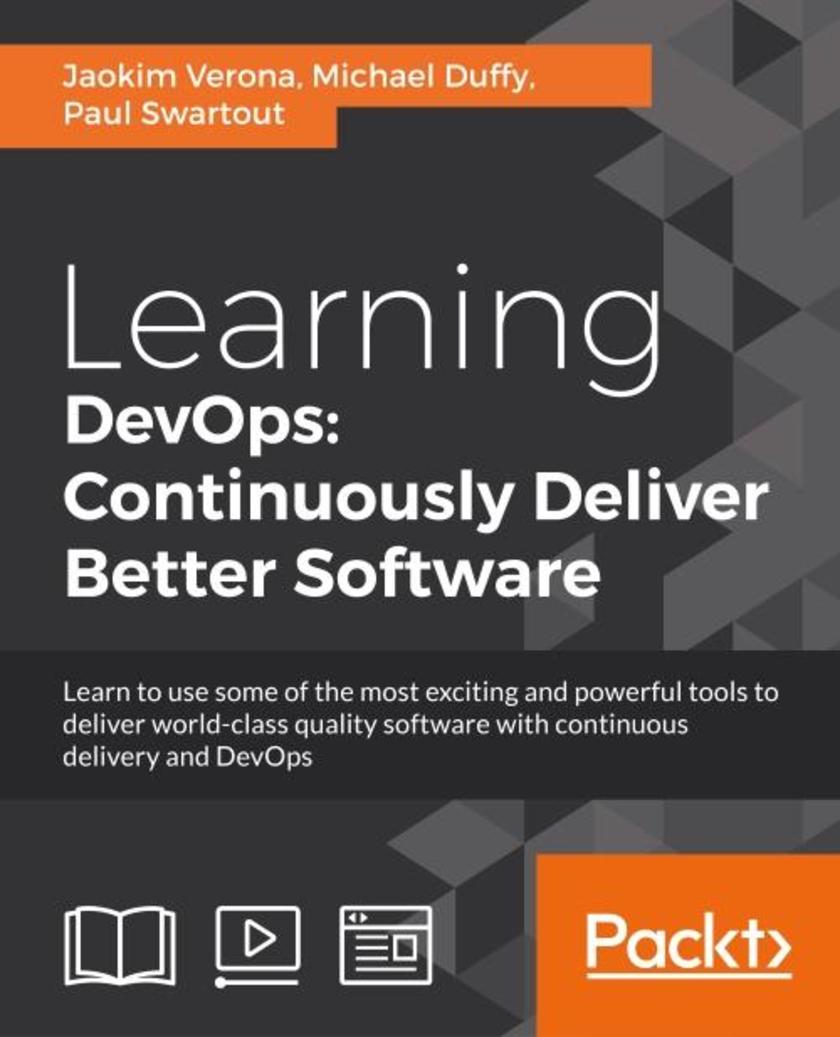
Learning DevOps: Continuously Deliver Better Software
¥152.59
Learn to use some of the most exciting and powerful tools to deliver world-class quality software with continuous delivery and DevOps About This Book Get to know the background of DevOps so you understand the collaboration between different aspects of an IT organization and a software developer Deploy top-quality software and ensure software maintenance and release management with this practical guide This course covers some of the most exciting technology available to DevOps engineers, and demonstrates multiple techniques for using them Real-world and realistic examples are provided to help you as you go about the implementation and adoption of continuous delivery and DevOps Who This Book Is For This course is for developers who want to understand how the infrastructure that builds today's enterprises works, and how to painlessly and regularly ship quality software. What You Will Learn Set up and familiarize yourself with all the tools you need to be efficient with DevOps Design an application that is suitable for continuous deployment systems with DevOps in mind Test the code using automated regression testing with Jenkins Selenium Managing the lifecycle of hosts, from creation to ongoing management using Puppet Razor Find out how to manage, use, and work with Code in the Git version management system See what traps, pitfalls, and hurdles to look out for as you implement continuous delivery and DevOps In Detail Harness the power of DevOps to boost your skill set and make your IT organization perform better. If you’re keen to employ DevOps techniques to better your software development, this course contains all you need to overcome the day-to-day complications of managing complex infrastructures the DevOps way. Start with your first module – Practical DevOps - that encompasses the entire flow from code from testing to production. Get a solid ground-level knowledge of how to monitor code for any anomalies, perform code testing, and make sure the code is running smoothly through a series of real-world exercise, and develop practical skills by creating a sample enterprise Java application. In the second module, run through a series of tailored mini-tutorials designed to give you a complete understanding of every DevOps automation technique. Create real change in the way you deliver your projects by utilizing some of the most commendable software available today. Go from your first steps of managing code in Git to configuration management in Puppet, monitoring using Sensu, and more. In the final module, get to grips with the continuous delivery techniques that will help you reduce the time and effort that goes into the delivery and support of software. This Learning Path combines some of the best that Packt has to offer in one complete, curated package. It includes content from the following Packt products: Practical DevOps by Joakim Verona DevOps Automation Cookbook by Michael Duffy Continuous Delivery and DevOps : A Quickstart Guide - Second Edition by Paul Swartout Style and approach This course is an easy to follow project based guide for all those with a keen interest in deploying world-class software using some of the most effective and remarkable technologies available.
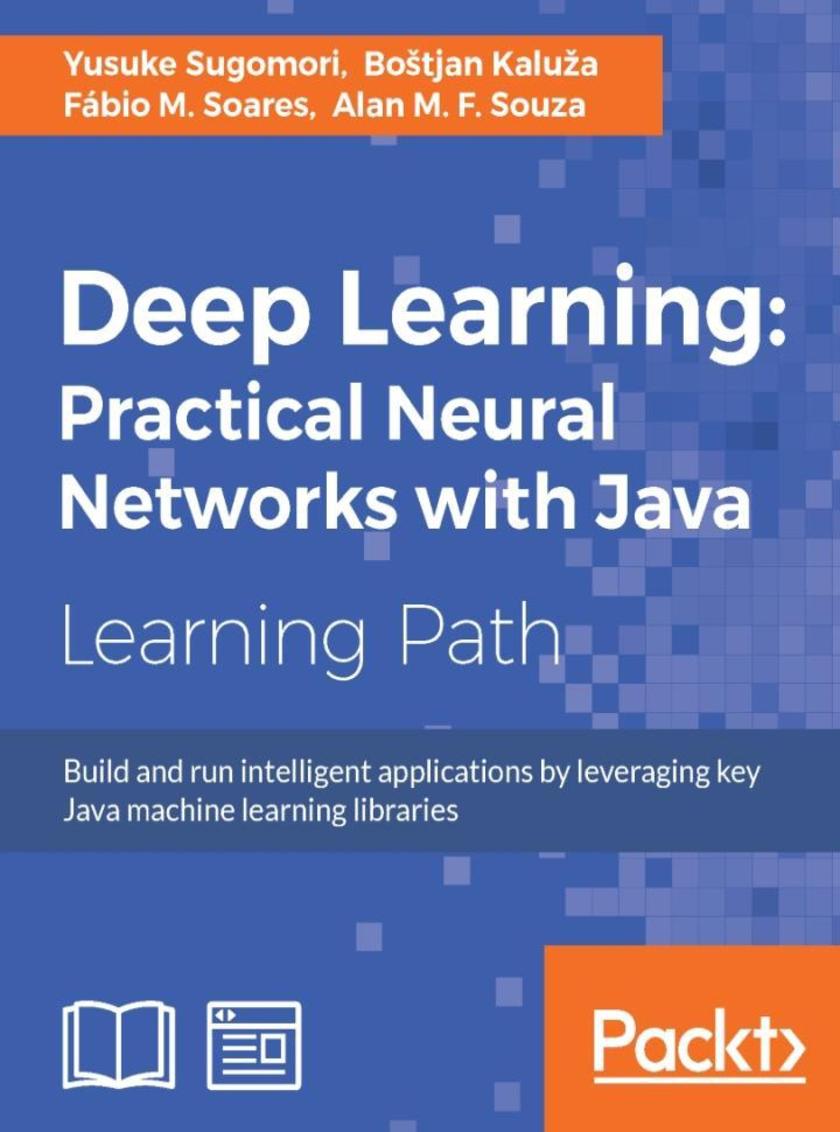
Deep Learning: Practical Neural Networks with Java
¥152.59
Build and run intelligent applications by leveraging key Java machine learning libraries About This Book ? Develop a sound strategy to solve predictive modelling problems using the most popular machine learning Java libraries. ? Explore a broad variety of data processing, machine learning, and natural language processing through diagrams, source code, and real-world applications ? This step-by-step guide will help you solve real-world problems and links neural network theory to their application Who This Book Is For This course is intended for data scientists and Java developers who want to dive into the exciting world of deep learning. It will get you up and running quickly and provide you with the skills you need to successfully create, customize, and deploy machine learning applications in real life. What You Will Learn ? Get a practical deep dive into machine learning and deep learning algorithms ? Explore neural networks using some of the most popular Deep Learning frameworks ? Dive into Deep Belief Nets and Stacked Denoising Autoencoders algorithms ? Apply machine learning to fraud, anomaly, and outlier detection ? Experiment with deep learning concepts, algorithms, and the toolbox for deep learning ? Select and split data sets into training, test, and validation, and explore validation strategies ? Apply the code generated in practical examples, including weather forecasting and pattern recognition In Detail Machine learning applications are everywhere, from self-driving cars, spam detection, document search, and trading strategies, to speech recognitionStarting with an introduction to basic machine learning algorithms, this course takes you further into this vital world of stunning predictive insights and remarkable machine intelligence. This course helps you solve challenging problems in image processing, speech recognition, language modeling. You will discover how to detect anomalies and fraud, and ways to perform activity recognition, image recognition, and text. You will also work with examples such as weather forecasting, disease diagnosis, customer profiling, generalization, extreme machine learning and more. By the end of this course, you will have all the knowledge you need to perform deep learning on your system with varying complexity levels, to apply them to your daily work. The course provides you with highly practical content explaining deep learning with Java, from the following Packt books: 1. Java Deep Learning Essentials 2. Machine Learning in Java 3. Neural Network Programming with Java, Second Edition Style and approach This course aims to create a smooth learning path that will teach you how to effectively use deep learning with Java with other de facto components to get the most out of it. Through this comprehensive course, you’ll learn the basics of predictive modelling and progress to solve real-world problems and links neural network theory to their application
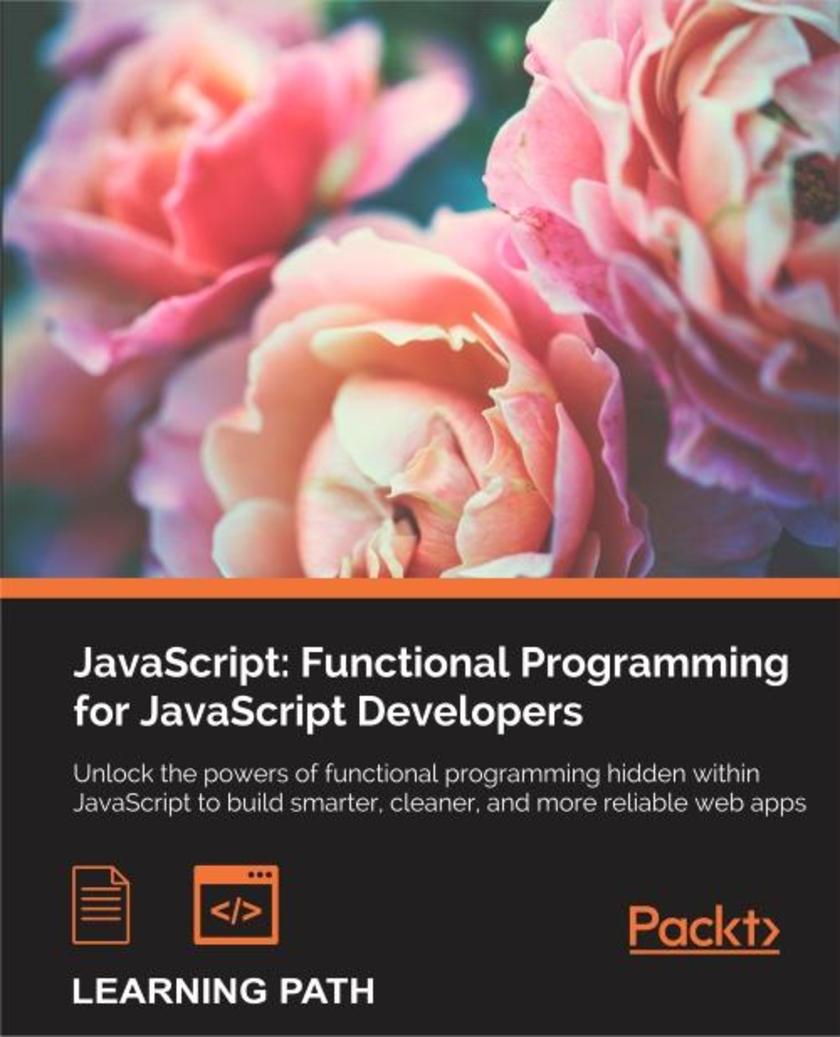
JavaScript: Functional Programming for JavaScript Developers
¥143.87
Unlock the powers of functional programming hidden within JavaScript to build smarter, cleaner, and more reliable web apps About This Book Write powerful code with the high-level functions that JavaScript offers Discover what functional programming is, why it's effective, and how it's used in JavaScript Understand and optimize JavaScript's hidden potential as a true functional language Who This Book Is For If you are a JavaScript developer interested in learning functional programming, looking for the quantum leap toward mastering the JavaScript language, or just want to become a better programmer in general, then this book is ideal for you. This guide is aimed at programmers, involved in developing reactive frontend apps, server-side apps that wrangle with reliability and concurrency, and everything in between. What You Will Learn Get a run through of the basic JavaScript language constructs Code using the powerful object-oriented feature in JavaScript Master DOM manipulation, cross-browser strategies, and ES6 Understand the basic concurrency constructs in Java* and best performance strategies Harness the power of patterns for tasks ranging from application building to code testing Build large-scale apps seamlessly with the help of reactive patterns Explore advanced design patterns, including dependency injection Develop more powerful applications with currying and function composition Create more reliable code with closures and immutable data In Detail JavaScript is a high-level, dynamic, untyped, lightweight, and interpreted programming language and functional programming is a style that emphasizes and enables smarter code that minimizes complexity and increases modularity. It's a way of writing cleaner code through clever ways of mutating, combining, and using functions. And JavaScript provides an excellent medium for this approach. By learning how to expose JavaScript's true identity as a functional language, we can implement web apps that are more powerful, easier to maintain and more reliable. The java *: Functional Programming for JavaScript Developers course will take you on a journey to show how functional programming when combined with other techniques makes JavaScript programming more efficient. The first module Mastering JavaScript, stress on practical aspects of Java* development like—Functions and Closures, Runtime debugging techniques, project layout, events and DOM processing, build tools, Object-oriented patterns, isomorphism—everything that a modern Java* project would need. The second module, Mastering JavaScript Design Patterns - Second Edition, will explore how design patterns can help you improve and organize your JavaScript code. You’ll get to grips with creational, structural, and behavioral patterns as you discover how to put them to work in different scenarios. This updated edition will also delve into reactive design patterns and microservices as they are a growing phenomenon in the world of web development. It will also show you some advanced patterns, including dependency injection and live post processing. The third module, Functional Programming in JavaScript, will help you to write real-world applications by utilizing a wide range of functional techniques and styles. It explores the core concepts of functional programming common to all functional languages, with examples of their use in JavaScript. Style and approach This course will begin with providing insights and practical tips on advanced JavaScript features to build highly scalable web and mobile system and move on to some design patterns with JavaScript. Finally, the course ends with presenting the functional programming techniques and styles in JavaScript.
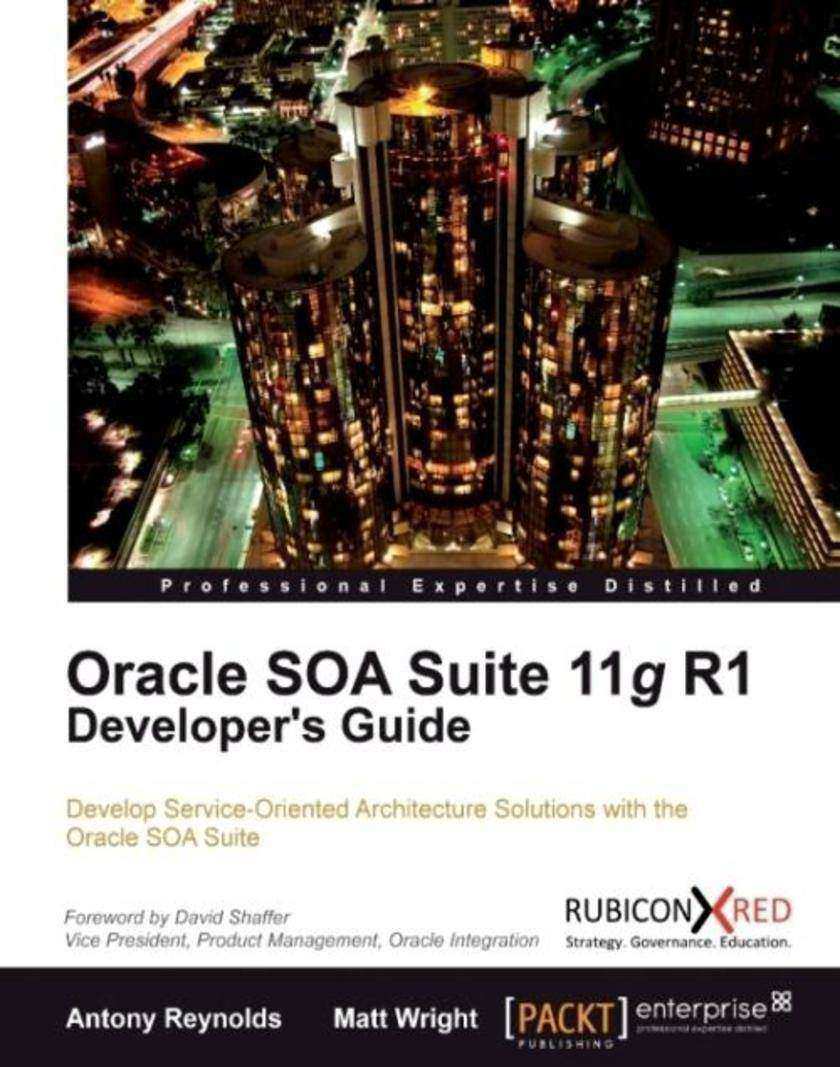
Oracle SOA Suite 11g R1 Developer's Guide
¥143.87
This book is a comprehensive guide, split into three sections. The initial section of the book provides an introduction to the Oracle SOA Suite and its various components, and will give you an in-depth fast-paced hands-on introduction to each of the key components. The next section provides an in-depth best-practice guide to applying the various components of the SOA Suite to implement a real-world SOA-based solution; it illustrates this through the development of an auction site (oBay). The final section covers other considerations such as the packaging, deployment, testing, security, and administration of SOA applications. If you are a developer or a technical architect who works in the SOA domain, this book is for you. The primary purpose of the book is to provide you with a hands-on practical guide to using and applying the Oracle SOA Suite in the delivery of real-world composite applications. You need basic understanding of the concepts of SOA, as well as some of the key standards in this field, including web services (SOAP, WSDL), XML Schemas, and XSLT (and XPath).
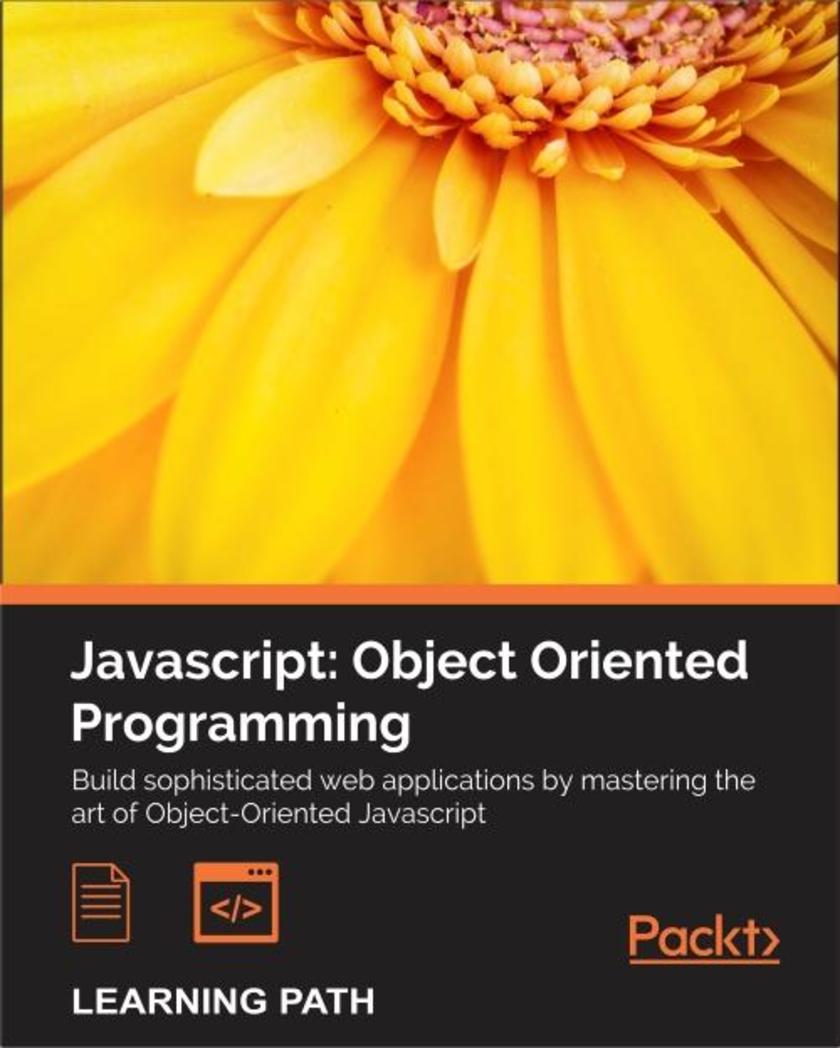
Javascript: Object Oriented Programming
¥143.87
Build sophisticated web applications by mastering the art of Object-Oriented Java* About This Book Learn popular Object-Oriented programming (OOP) principles and design patterns to build robust apps Implement Object-Oriented concepts in a wide range of frontend architectures Capture objects from real-world elements and create object-oriented code that represents them Learn the latest ES6 features and how to test and debug issues with JavaScript code using various modern mechanisms Who This Book Is For JavaScript developers looking to enhance their web developments skills by learning object-oriented programming. What You Will Learn Get acquainted with the basics of JavaScript language constructs along with object-oriented programming and its application. Learn to build scalable server application in JavaScript using Node.js Generate instances in three programming languages: Python, JavaScript, and C# Work with a combination of access modifiers, prefixes, properties, fields, attributes, and local variables to encapsulate and hide data Master DOM manipulation, cross-browser strategies, and ES6 Identify and apply the most common design patterns such as Singleton, Factory, Observer, Model-View-Controller, and Mediator Patterns Design applications using a modular architecture based on SOLID principles In Detail JavaScript is the behavior, the third pillar in today's paradigm that looks at web pages as something that consists of : content (HTML), presentation (CSS), and behavior (JavaScript). Using JavaScript, you can create interactive web pages along with desktop widgets, browser, and application extensions, and other pieces of software. Object-oriented programming, which is popularly known as OOP, is basically based on the concept of objects rather than actions. The first module will help you master JavaScript and build futuristic web applications. You will start by getting acquainted with the language constructs and how to organize code easily. You develop concrete understanding of variable scoping, loops, and best practices on using types and data structures, as well as the coding style and recommended code organization patterns in JavaScript. The book will also teach you how to use arrays and objects as data structures. By the end of the book, you will understand how reactive JavaScript is going to be the new paradigm. The second module is an easy-to-follow course, which includes hands-on examples of solutions to common problems with object-oriented code. It will help to identify objects from real-life scenarios, to protect and hide data with the data encapsulation features of Python, JavaScript, and C#. You will discover the advantage of duck typing in both Python and JavaScript, while you work with interfaces and generics in C#. With a fair understanding of interfaces, multiple inheritance, and composition, you will move on to refactor existing code and to organize your source for easy maintenance and extension. The third module takes you through all the in-depth and exciting futures hidden behind the facade. You should read through this course if you want to be able to take your JavaScript skills to a new level of sophistication. Style and approach This course is a comprehensive guide where each chapter consists of best practices, constructive advice, and few easy-to-follow examples that will build up your skills as you advance through the book. Get object oriented with this course, which takes you on a journey to get acquainted with few useful hands-on tools, features, and ways to enhance your productivity using OOP techniques. It will also act as a reference guide with useful examples on resolving problems with object-oriented code in Python, JavaScript, and C#.
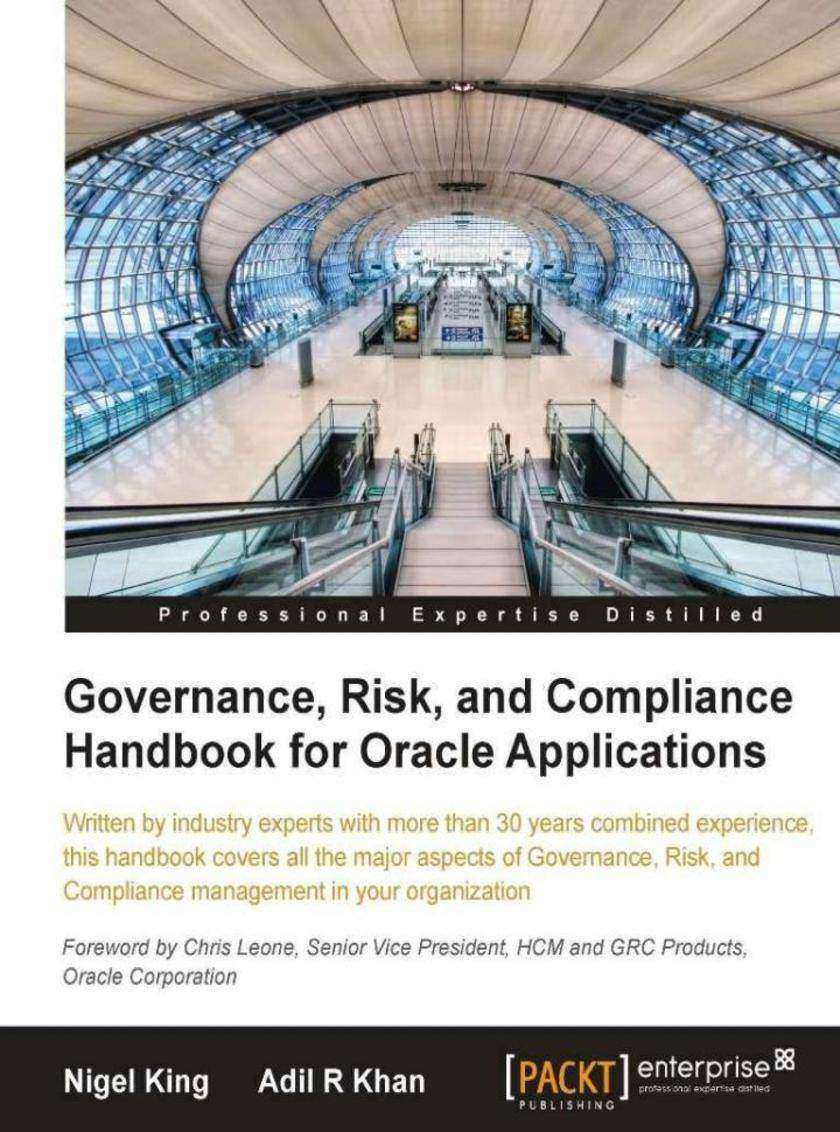
Governance, Risk, and Compliance Handbook
¥135.15
The book is not organized by product, rather by the governance and risk assurance processes. A given product may be represented in multiple places within the book and a given process may contain multiple product references. To ensure that we keep ourselves grounded in real problems, the book is written as a journal of a fictional company establishing its governance processes. It will introduce managers and directors responsible for various aspects of the governance, risk and compliance problem and where that problem is exposed and how it is addressed in the technology and business applications. The audience for this book is the people that advise the board, the internal audit department and CIO office on controls, security and risk assurance. Consultants that are implementing Financials or GRC Applications who wish to gain an understanding of the Governance Risk and Compliance processes, and how they are represented in Oracle, should find it a useful primer. Risk Assurance professionals will find it a reliable companion.




 购物车
购物车 个人中心
个人中心



